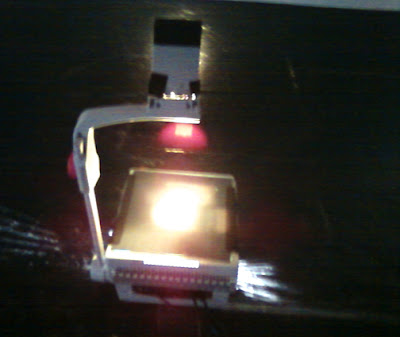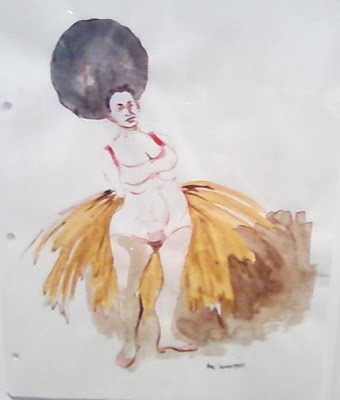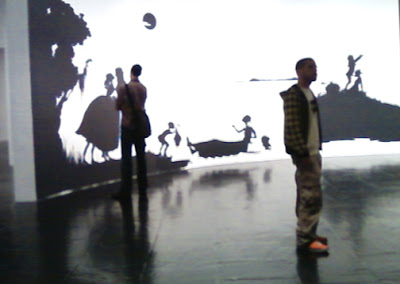Kara Walker: My Complement, My Enemy, My Oppressor, My Love opened at the Whitney Museum on October 11th 2007 and will close February 3rd, 2008. I went to see the exhibit last Wednesday, and have only now been able to put my thoughts and viewpoints into a collective written summery.
Kara Walker emerged, a young African American artist, in 1994 making her debut at the Drawing Center. Her silhouettes pasted onto gallery walls speak (or rather yell) stories that pull from a dire time in American history: slavery. Upon looking at the work, one’s mind may wander to the time of an Underground Railroad and the injustices that took place predominately in the South. Walkers figures, are stylistically reminiscent of that time period and take inspiration from historical novels, paintings, embroideries, and minstrel shows focusing on both gender and racial bias. The works address the viewer matter-of-factly and with a pointed finger. The narratives are contemporary translations and exaggerations of stories that may or may not have occurred. Hybrid figures, amalgams, are formed; part man, part young girl with pigtails, part animal, and emerge upon first, second or even third glance. The images, child-like yet daftly executed, are startlingly violent.
Being a person drawn to vibrant colors, I found myself drawn to a large room-the first “detour” from the main gallery space-featuring flat silhouette figures that come to life by the use of colored acetate and an overhead projector. The artist has utilized precisely cut, overlapping acetate to create an environment on the wall for the figures to exist in. The effect is dreamy and haunting. I became entralled when a guide from a passing tour stepped in front of the projector, immediately becoming part of the narrative. I found myself wanting to jump in as well and had to fight the urge that welled up inside.
Beautifully deceptive.
Do I really want to be part of that narrative? No. But the handling of color and the dimly lit room lends itself to viewer participation. Perfectly ironic based on the subject matter.
Perfect.
A majority of the artwork in this retrospective, ranges from 2004/05 and its not until the last gallery until we see work from 2007. I believe that the curators and organizers at both the Whitney and the Walker Art Center, Minneapolis, succeed in communicating the agenda of Kara Walker. The only lack that I felt revealed itself in the viewing audience. It might have been the time of day (afternoon), or the day of the week (Wednesday), but the familiar midday art crowd was compiled of mostly obviously wealthy Caucasian women, with big hair, big jewelry, and big grins. Missed was a culturally diverse presence and one can’t help but feel the fight that still persists not only on the walls but within the walls.
The struggle for true racial harmony continues. Fortunately, Kara Walker acts as an artistic bridge, along with many other artists including Fred Wilson whose work made a great impact at the American Pavilion in the 2003 Biennale di Venezia. Using their work as a gauzy filter in which to look through, these artists remind us of the foggy racial divisions of the past, whose stories now broadcast and disguise themselves in art. Silhouette cutouts, drawings, paintings, video and installation communicate personal yet universally understood messages and with venues such as the Whitney Museum, The Walker Art Center and the Biennale, eyes are now more then willing to
Look.
(all photos were slyly taken with my Samsung camera phone, 2008)





